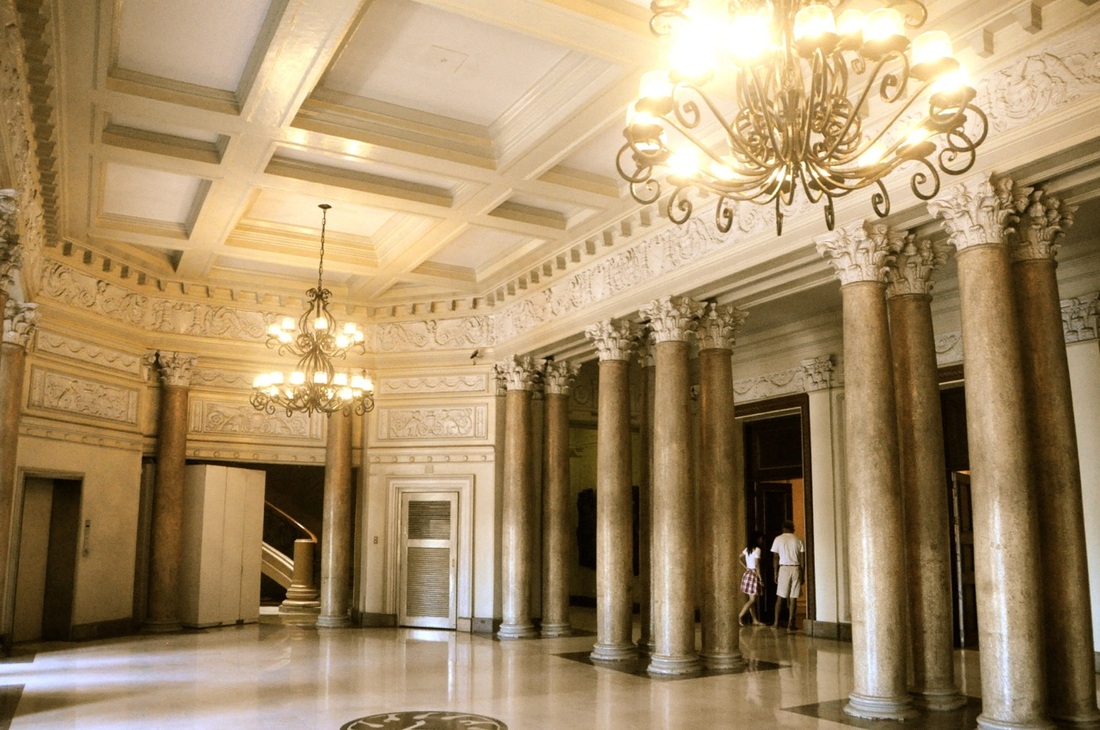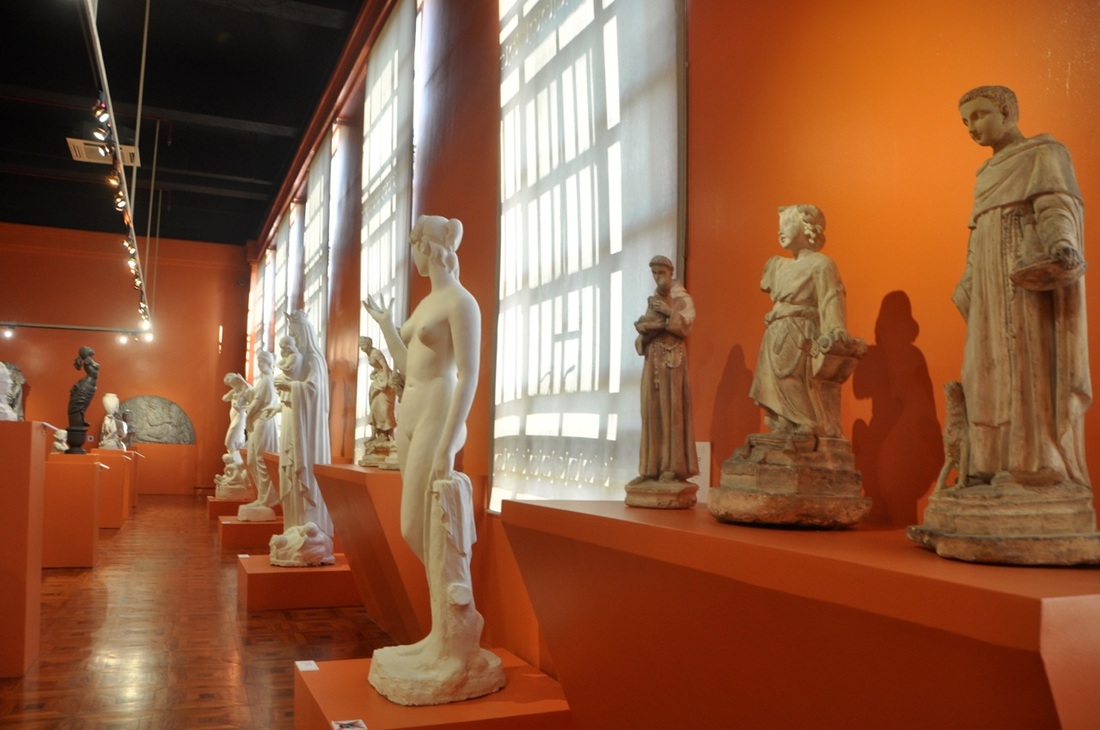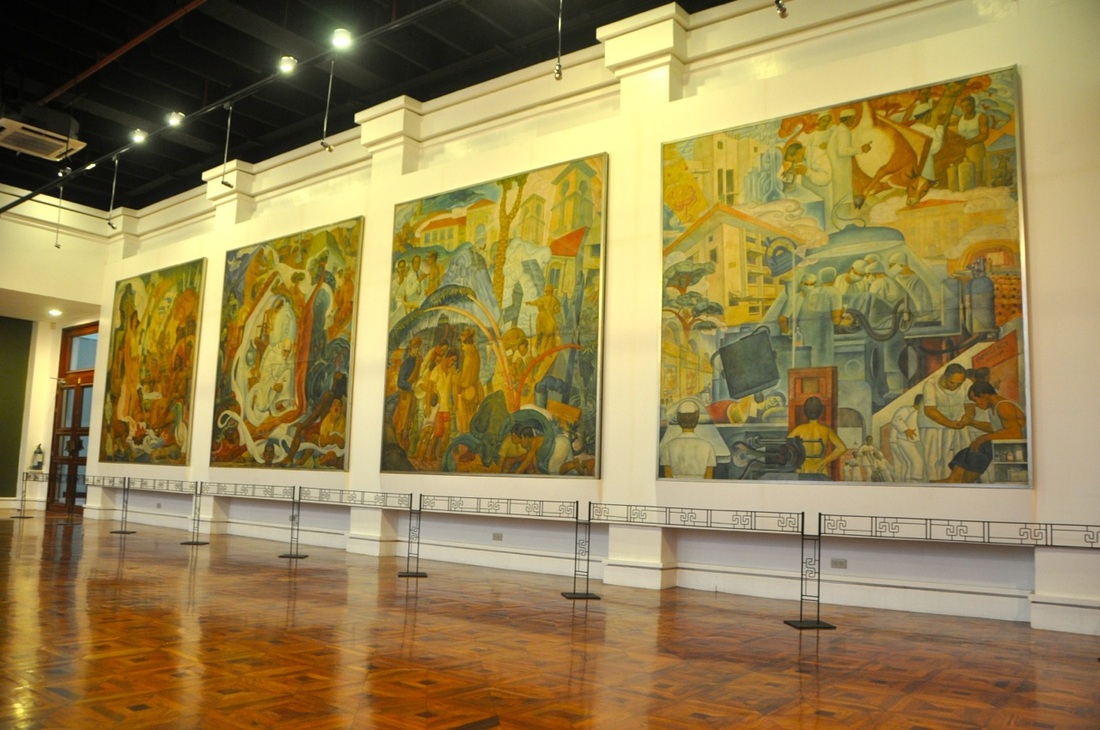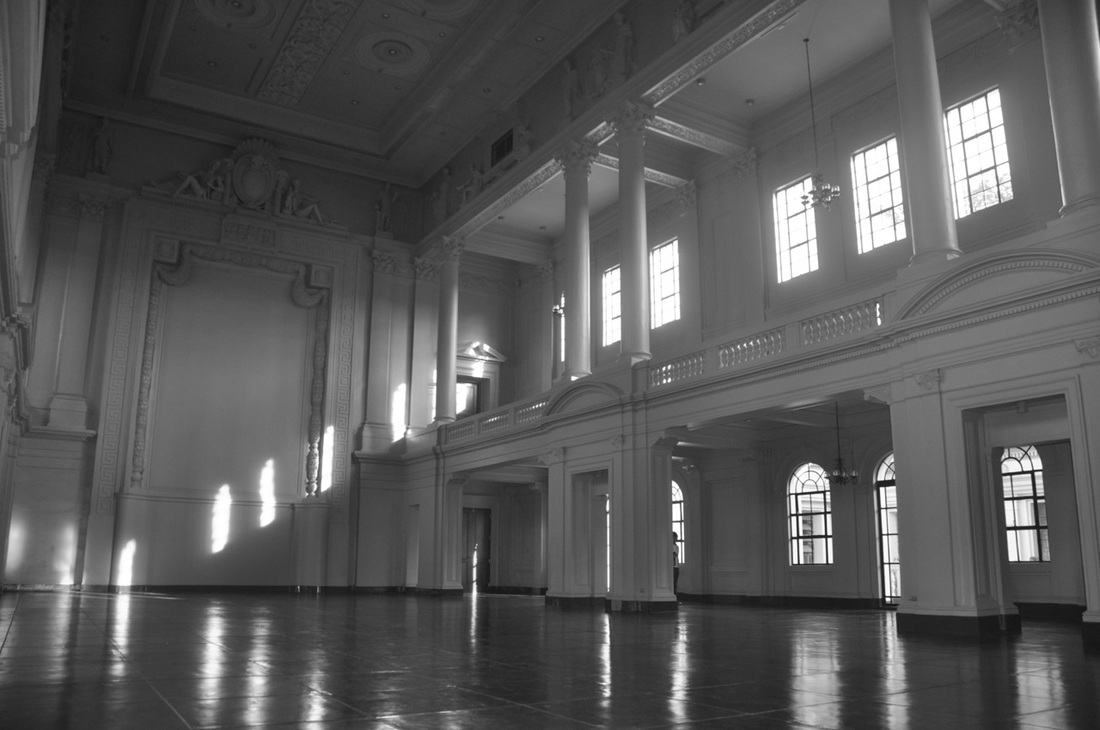Most often than not, when one speaks of travel - art galleries and museums are disregarded to make way for more "fun" destinations such as beaches, resorts and parks.
When I am overseas or visiting a new place, I make sure to include museums and galleries if they have in the itinerary because it is through these confined yet rich destinations that I can understand their culture and history.
The last time I visited the National Musuem in Manila was during a field trip in elementary school about 17 years ago. So when I heard an announcement that the National Museum started doing renovations, I psyched myself to pay a visit again. On October 14, 2012 I went back in time for Museums and Galleries Month. This time entrance to the Museum was FREE.
When I am overseas or visiting a new place, I make sure to include museums and galleries if they have in the itinerary because it is through these confined yet rich destinations that I can understand their culture and history.
The last time I visited the National Musuem in Manila was during a field trip in elementary school about 17 years ago. So when I heard an announcement that the National Museum started doing renovations, I psyched myself to pay a visit again. On October 14, 2012 I went back in time for Museums and Galleries Month. This time entrance to the Museum was FREE.
The National Art Gallery of the National Museum is located at the Old Congress Building. It was designed by Ralph Harrington Doanne and Antonio Toledo in 1918 which was originally intended as a National Library of the Philippines.
Through the years it was decided to be used by the Congress. During the leadership of Claro M. Recto, the 1934 Constitutional Convention was held here. Philippinie Presidents were sworn in here too; Manuel L. Quezon in 1935, Jose P. Laurel in 1943 and Manuel Roxas in 1946.
The Old Cogress Building is not only important to my family not only because we are Filipinos but because my grandfather worked here as a lawyer until Congress was abolished in 1972 when Martial Law was declared.
Through the years it was decided to be used by the Congress. During the leadership of Claro M. Recto, the 1934 Constitutional Convention was held here. Philippinie Presidents were sworn in here too; Manuel L. Quezon in 1935, Jose P. Laurel in 1943 and Manuel Roxas in 1946.
The Old Cogress Building is not only important to my family not only because we are Filipinos but because my grandfather worked here as a lawyer until Congress was abolished in 1972 when Martial Law was declared.
Let me take you on a tour of the National Art Gallery starting with the main entrance. Almost all gallery doors at the Museum are inscribed with initials NM meaning National Museum. These were designed by the Father of Modern Philippine Sculpture, National Artist Napolen V. Abueva.
This is the grand lobby of the National Museum. Notice the detailed cornices, large columns and chandeliers designed by Impy Pilapil that greet visitors in a colonial era setting. Such a fitting prelude to a hall across where Bulwagang Luna at Hidalgo is located.
This masterpiece by Juan Luna is a painting depicting a scene at the exit room of the Roman Colleseum called Spoliarium, hence its name. It illustrates injured and dying gladiators being dragged in. (John Silva 2008)
The fact remains that when Luna and Felix Resureccion Hildalgo won the top awards in the Madrid Exposition of 1884, they proved to the world that indios could, despite their supposed barbarian race, paint better than the Spaniards who colonized them. (Ambeth R. Ocampo, "Rizal Without the Overcoat" 2000)
Rizal was footnoted in his speech that the Spoliarium "embodied the essence of our social, moral and political life: humanity is severe ordeal, humanity unredeemed, reason and idealism in open struggle with prejudice, fanaticism and justice..." (Leon Ma. Guerrero, "The First Filipino People" 2007)
Rizal who was friends with Luna and Hildalgo was inspired by the painting which led him to write his own 'Spoliarium' - that book would be called "Noli Me Tangere"
The fact remains that when Luna and Felix Resureccion Hildalgo won the top awards in the Madrid Exposition of 1884, they proved to the world that indios could, despite their supposed barbarian race, paint better than the Spaniards who colonized them. (Ambeth R. Ocampo, "Rizal Without the Overcoat" 2000)
Rizal was footnoted in his speech that the Spoliarium "embodied the essence of our social, moral and political life: humanity is severe ordeal, humanity unredeemed, reason and idealism in open struggle with prejudice, fanaticism and justice..." (Leon Ma. Guerrero, "The First Filipino People" 2007)
Rizal who was friends with Luna and Hildalgo was inspired by the painting which led him to write his own 'Spoliarium' - that book would be called "Noli Me Tangere"
Just beside the entrance of Bulwagang Luna at Hidalgo are sculptures of National Artist Napoleon Abueva.
Gallery 1 is the Luis I. Ablaza Hall which contains colonial Philippine religious art of the 17th to the 19th centuries, prominent among which is a retablo from the Church of San Nicolas De Tolentino in Dimiao, Bohol - a National Cultural Treasure - together with a selection of carved religious images (santos), reliefs and paintings.
Gallery II is the Friends for Cultural Concern of the Philippines or FCCP Hall which contains the earliest Philippine paintings depicting a historical political event, The Basi Revolt series by Esteban Villanueva of Vigan (on indefinite loan from the Ilocos Sur Historical and Cultural Foundation). Painted in 1821, fourteen paintings, together declared as a National Cultural Treasure, depict in naive and vivid style the famous 1807 uprising in Ilocos against colonial rule that culminated in a bloody defeat at the Bantaoay River in San Ildefonso, Ilocos Sur.
Gallery III is the Philippine art of the academic and romantic period, specifically the last three decades of the 19th century featuring especifically the Museum's considerable holdings of the work of Juan Luna and key contemporaries.
Gallery IV is the Fundacion Santiago Hall which contains the works of 19th century Filipino sculptors notably Isabelo Tampinco y Lacandola as well as his contemporaries and artistic successors whose works are distinguished by a strong academic and neo-classical style including Isabelo's sons Angel and Vidal, Graciano Nepomuceno, Anastacio Caedo, Florentino Caedo and Guillermo Tolentino.
Gallery V is the Dr. Jose Rizal Gallery. It contains works by the polymath and National Hero including four original sculptures and one fine drawing, view of Gendarmenmarkt from his 1886 sojourn in Berlin.
Gallery VI contains the work of late contemporaries and artistic successors of the generation of Luna and Hidalgo who were active in the late Spanish colonial period and on into American occupation and before the Second World War, including Fabian dela Rosa, Jorge Pineda, Irineo Miranda, Fernando Amorsolo, Pablo Amorsolo and numerous other artists who shaped Philippine art before and contemporaneous to the advent of Modernism in the country.
Galleries VII and VIII are under construction.
Gallery IX contains the work of great Philippine modernists featuring important works by Victorio Edades, Diosdado Lorenzo, Vicente Manansala, Carlos V. Francisco, Hernando R. Ocampo, Cesar Legaspi, Ang Kiukok and various other artists who were instrumental in setting bold directions for Philippine art from the 1930's into the decades of the post-war period.
Gallery IX contains the work of great Philippine modernists featuring important works by Victorio Edades, Diosdado Lorenzo, Vicente Manansala, Carlos V. Francisco, Hernando R. Ocampo, Cesar Legaspi, Ang Kiukok and various other artists who were instrumental in setting bold directions for Philippine art from the 1930's into the decades of the post-war period.
Gallery X is the Museum Foundation Hall which is dedicated to the Progress of Medicine in the Philippines, a set of four large paintings by Carlos V. Francisco specially comissioned for the entrance hall of Philippine General Hospital in 1953. Declared a National Cultural Treasure, these important works were placed on indefinite loan to the National Museum by the University of the Philippines to secure their preservation for future generations.
Located at the third floor of the Museum are more galleries showcasing Philippine Textiles and Philippine Botany.
Located at the third level is the newly renovated session hall of the Old Congress Building. If only walls could talk, this room is a living witness to glorious past. A time when the Senate is an august body filled with intellectuals.
My overall experience at the National Museum was very satisfied. I am very much grateful to the management of the National Museum for working hard in maintaining the whole complex along with its numerous artifacts and works of art. All galleries were well thought of, highly maintained with its aircondition system and efficient lighting. The restrooms were clean too.
Although the Museum is still a work in progress, there are still some areas for improvement which I would like to suggest if I may say so.
1. Audio tours when the Museum is done with its renovations as this will increase efficiency in the sharing of knowledge to visitors. To those who are not familiar with audio tours, these are sets of recorded (tape) given to visitors in which they can press 'play' or 'pause' as they tour around the Museum.
2. Invite volunter guides to the Museum. I went there on a Sunday afternoon when there was a stream of visitors coming in, mostly families with children. It would be nice to have volunteer guides who are willing to share knowledge and speak about the Museum.
3. Convert the courtyard into an al fresco dining destination or coffee shop. I spent almost 5 hours going around and was hoping I could buy some snacks or drinks within the Museum but there was none available. Maybe you could consider inviting a Filipino specialty restaurant to operate there. It would be income generating too for the Museum.
4. Since this is called National Art Gallery, would you also be showcasing other forms of art by renowned Filipino talents in Litretaure, Music, Dance, Film and Architecture? I am not quite sure if they are represented at the Museum of the Filipino People. That I had to go back because I ran out of time last time I visited.
5. Since most of the visitors are children who are on their field trips, please try to make some of the galleries appear more interactive by introducing ways that would encourage children to touch, smell or hear objects.
6. Souvenir Shop. It would be wonderful to take home something from the Museum. It could be postcards, books, pens or any Filipino made merchandise.
Next stop, National Museum of the Filipino People.
Although the Museum is still a work in progress, there are still some areas for improvement which I would like to suggest if I may say so.
1. Audio tours when the Museum is done with its renovations as this will increase efficiency in the sharing of knowledge to visitors. To those who are not familiar with audio tours, these are sets of recorded (tape) given to visitors in which they can press 'play' or 'pause' as they tour around the Museum.
2. Invite volunter guides to the Museum. I went there on a Sunday afternoon when there was a stream of visitors coming in, mostly families with children. It would be nice to have volunteer guides who are willing to share knowledge and speak about the Museum.
3. Convert the courtyard into an al fresco dining destination or coffee shop. I spent almost 5 hours going around and was hoping I could buy some snacks or drinks within the Museum but there was none available. Maybe you could consider inviting a Filipino specialty restaurant to operate there. It would be income generating too for the Museum.
4. Since this is called National Art Gallery, would you also be showcasing other forms of art by renowned Filipino talents in Litretaure, Music, Dance, Film and Architecture? I am not quite sure if they are represented at the Museum of the Filipino People. That I had to go back because I ran out of time last time I visited.
5. Since most of the visitors are children who are on their field trips, please try to make some of the galleries appear more interactive by introducing ways that would encourage children to touch, smell or hear objects.
6. Souvenir Shop. It would be wonderful to take home something from the Museum. It could be postcards, books, pens or any Filipino made merchandise.
Next stop, National Museum of the Filipino People.






























 RSS Feed
RSS Feed